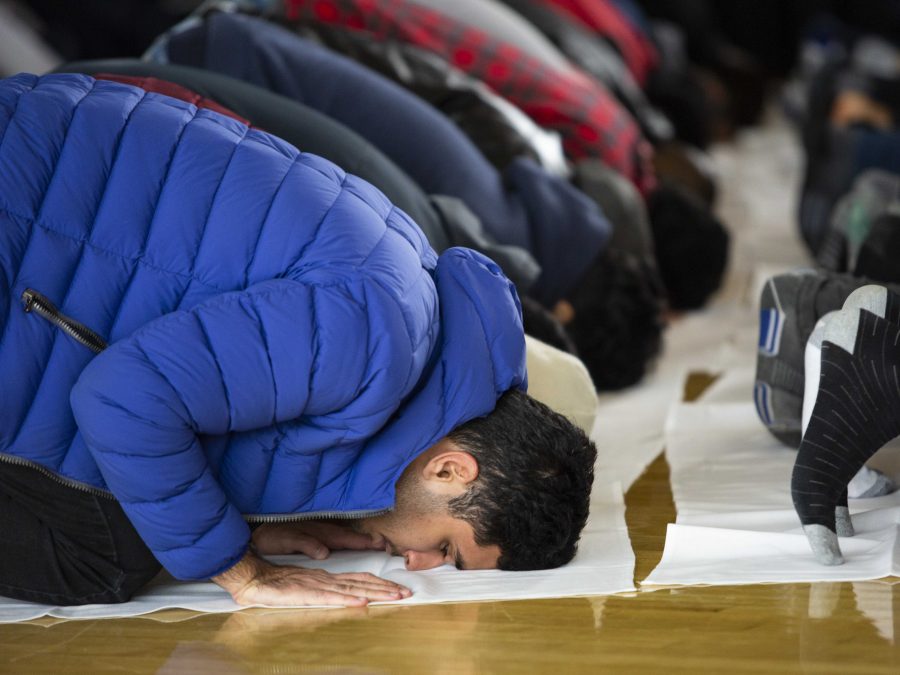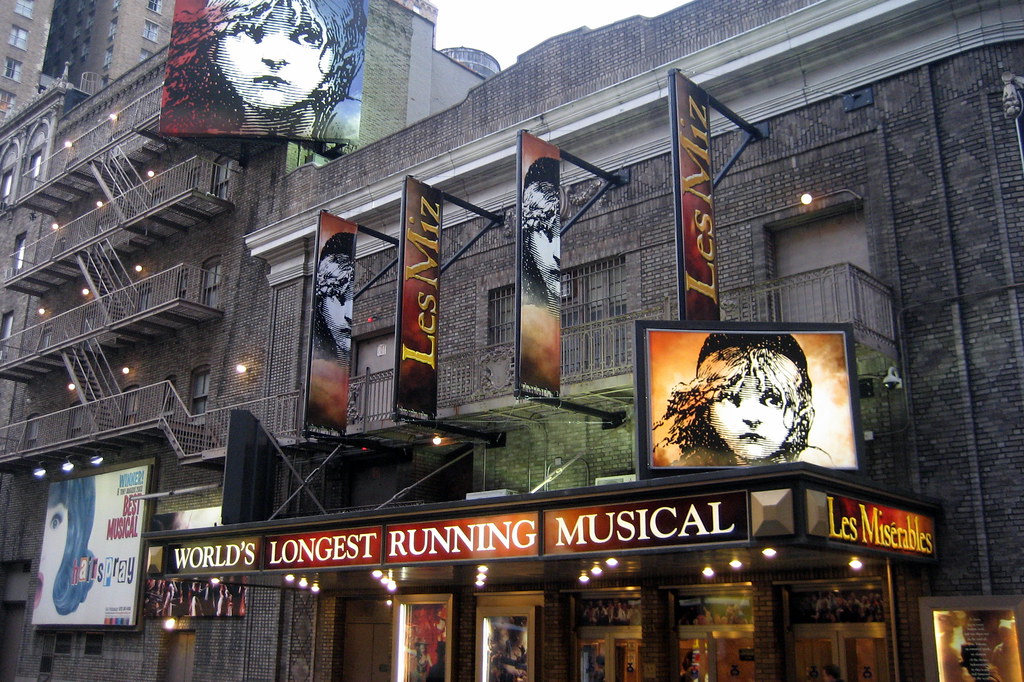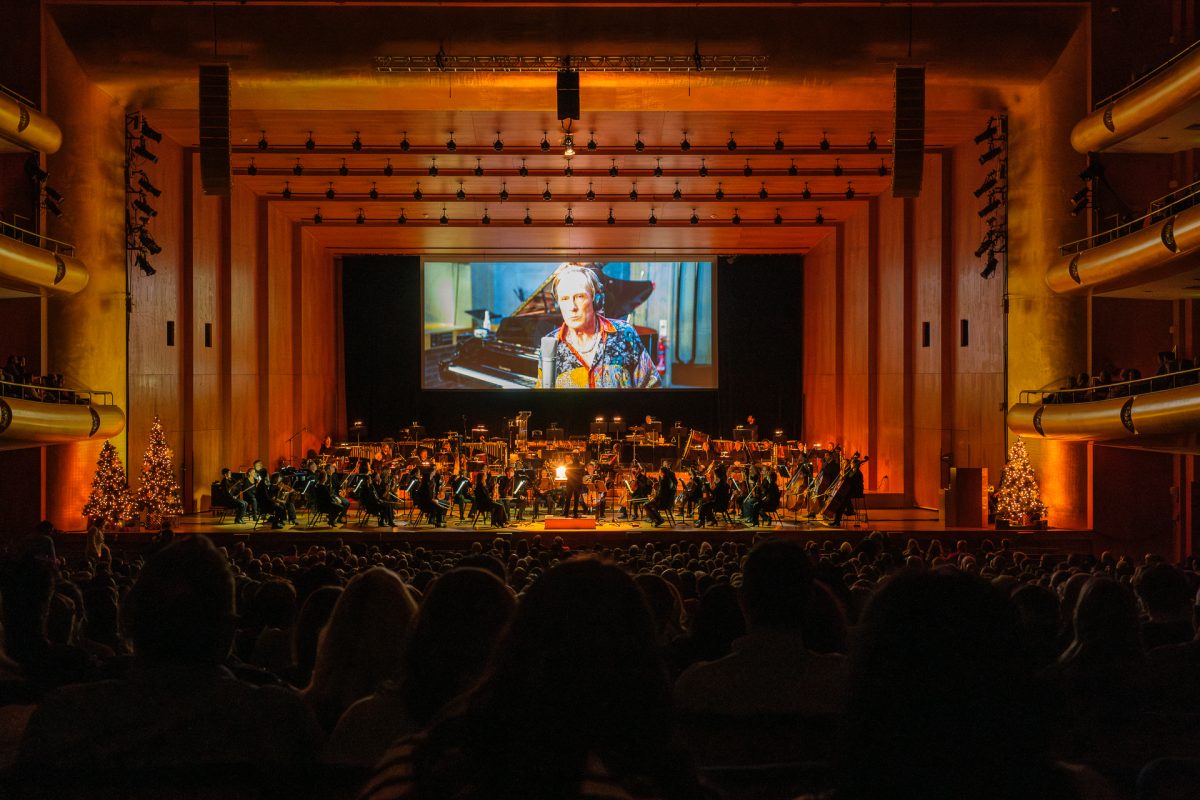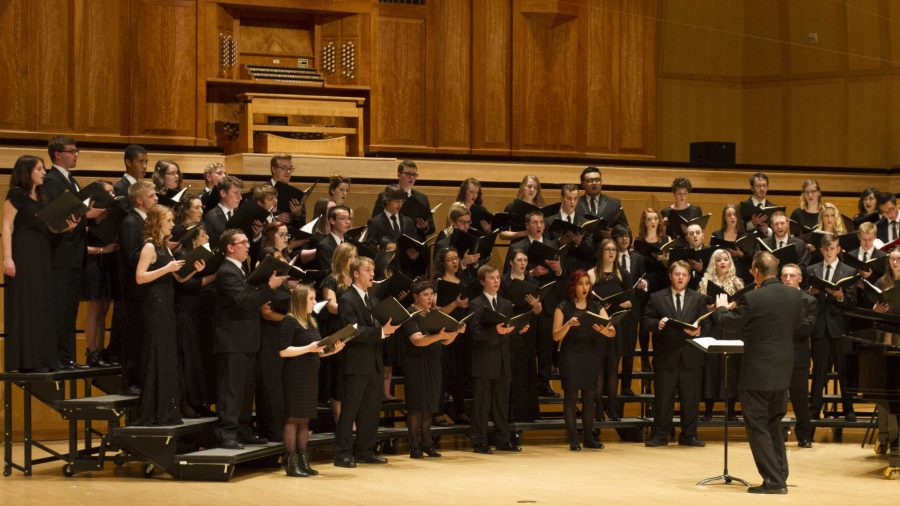In recent years, one of the biggest debates during the holiday season is the “war on Christmas,” a tug-of-war between the secular and the sacred in our society. The inclusivity of the words “winter” or “holiday” to respect how people wish to spend the season can be politically aggravating or divisive — calling on arguments of respect, censorship and freedoms.
As art imitates life, concerts and events this time of year are branded with words that attempt to be inclusive, but songs from sacred Christian backgrounds comprise a majority of holiday selections. Are arts students on our campus affected by the religious connotations of the music performed, and what is the relevance of these songs musically?
Finding the Roots of a Chorus
Western choral music finds its first roots in Ancient Greek theater as a unison chorus, evolving into notated harmonies through Gregorian chant. This style of music was part of Catholic services between the 4th and 6th centuries until artists began composing for church services. This trend continued all the way through the Romantic period up to the 19th century when more possibilities for musicianship outside of sacred services arose. These choral pieces became “concert-ized.” “Christmas” music now has a distinct sound, found in the booming chords of a Handel Hallelujah chorus or in the bell tones’ chime of Mariah Carey’s more recent hit.
This year’s Christmas concert presented by the University of Utah Choirs was entitled “Sing We Now Noel,” featuring vibrant arrangements of familiar Christmas songs and several beautiful pieces outside of the traditional carols. Emily Mercado, a first semester professor at the U, was one of the music directors featured in the concert for her work with the Women’s Chorus. Mercado has researched choral music education at several universities, all culminating in her dissertation on the perceptions of religious music in public schools. She is passionate about understanding how structuring performance benefits the work of the students.
Programming Techniques
With the rising popularity of attending concerts, concert programming took on a certain method. Compiling a program that a general audience would enjoy requires attention to different elements of music: variations in time period, representation of different composers (especially work from women artists outside of the mainstream canon), different locations of origin, texts by diverse poets or lyricists — not to mention selecting pieces that “sound” different. Having more music at our fingertips than ever before, choral directors have to do their research — digging into the tempo, rhythm, key, melody and other qualities of music as part of their programming.
As someone involved in higher education, Mercado’s goal is to design a concert order with student success as its first priority. She says it is most important to remain flexible in your selections and adhere to the strengths of the ensemble. Students can even suggest or contribute songs that they feel would showcase the sound of their choir or add something to a program that hasn’t yet been done.
Modifying the Instrument
Pieces drawn from other cultures outside of the tall, dark sound of ancient choirs actually require adaptations in the mechanism of singing, changing timbres (the quality and color of musical sounds). Even vowel sounds have to be modified in order for students to perform pieces authentically. Utilizing songs from other cultures is a challenge for musical growth. Music from around the world doesn’t obey the same rules, or sometimes even the same notations, like that of Western choral pieces.
This held true in the women’s choir performance. They moved from their opening piece of “Nu är det Jul igen (Yuletide is here again),” which was bright and dancey, to “Snow By Morning,” which featured the secular text of Utah poet May Swenson. Her smooth and flowing music transitioned into “Noel” — based off of a traditional worship song from the Democratic Republic of Congo that featured an a cappella call-and-response of solos and instruments. The programming fit the ensemble beautifully, as they were able to morph their sound to match the style of each piece.
Setting Legal Precedent
As diverse as their selections were in origin and musicality, two included text from the Christian faith. Singing these songs in a public school has sparked controversy in Utah, and was taken to the courts in the 1990s. In the case of Bauchman v. West High School, a student sued over the use of songs with religious texts in a Christmas concert. The court ruled in favor of the school, given that the purpose of the concert and the religious themes and texts prevalent in Western music are required as a piece of a rounded curriculum.
In preparation for Christmas caroling, theater students run into similar issues in a drive to appeal to their audience. As a member of the Musical Theatre Program, as well as a member of Hillel Utah, Chloe Laverson takes no issue in singing songs with religious texts. However, she wants people to understand that it is a challenge to students who aren’t a part of these traditions. The melodies of Christmas songs are unfamiliar to her, so trying to sing along with them is difficult. “I treat it like work. In everything I do, school is my first priority. So, I welcome the challenge of sight-reading because I know it will make me a better musician.”
Like students on campus understand, it takes a sacrifice of time to stay on top of the work. Laverson hopes people consider how hard it can be for students outside of Christianity to spend their holidays away from their families and studying for finals. “I know Hanukkah and Christmas will never be equal,” she said, “but inclusivity is never an extreme. Besides, just take a look at how many Christmas songs were written by Jews.”
Worship in Other Faiths
One factor of why we don’t hear Hebrew songs playing in department stores around Hanukkah is the fact that they haven’t been “concert-ized” and familiarized in the way Christian music has. The ritual chantings of Hebrew prayers in synagogue services, known as cantillation or ‘trope,’ remain an integral piece of worship. These trope prayers are also musically notated in a different way than the sheet music of today.
Performance of any of piece in an educational or professional setting comes down to purpose. Christmas concerts at the U aren’t meant to evangelize or promote any religious persuasion. They cater to the ears of an audience, one that continues to participate in the spirit of the holiday season and enjoy the music in its aesthetics and nostalgia.
In the choir’s concert, professor Barlow Bradford gave a preface to the Chamber Choir’s performance of Will Todd’s “Among Angels.” He shared that, although it is not a Christmas song, the message of colorful text is something we can all take to heart — “seek out light and find it to your own mind.”
The purpose of using religious texts in choral music, especially around a holiday as big as Christmas, has changed. From the origins of spirituality, these texts are now used historically. Through the lens of familiar stories, they are meant to do what any good piece of art does — inspire, evoke and transform.
This article is part of the Poynter College Media Project. Click here for more stories and information on the topic “Are U Mormon?”






















